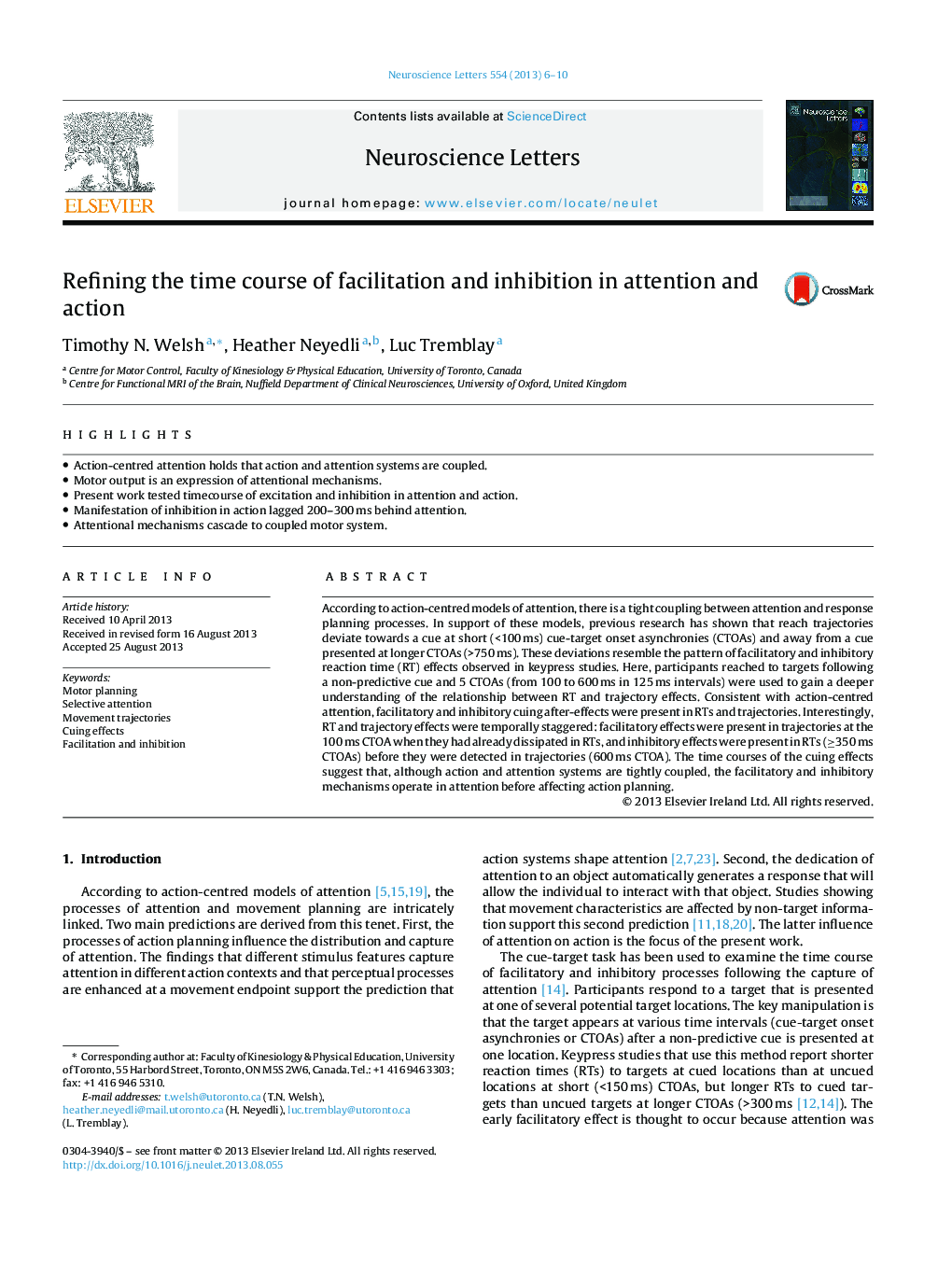| Article ID | Journal | Published Year | Pages | File Type |
|---|---|---|---|---|
| 4343946 | Neuroscience Letters | 2013 | 5 Pages |
•Action-centred attention holds that action and attention systems are coupled.•Motor output is an expression of attentional mechanisms.•Present work tested timecourse of excitation and inhibition in attention and action.•Manifestation of inhibition in action lagged 200–300 ms behind attention.•Attentional mechanisms cascade to coupled motor system.
According to action-centred models of attention, there is a tight coupling between attention and response planning processes. In support of these models, previous research has shown that reach trajectories deviate towards a cue at short (<100 ms) cue-target onset asynchronies (CTOAs) and away from a cue presented at longer CTOAs (>750 ms). These deviations resemble the pattern of facilitatory and inhibitory reaction time (RT) effects observed in keypress studies. Here, participants reached to targets following a non-predictive cue and 5 CTOAs (from 100 to 600 ms in 125 ms intervals) were used to gain a deeper understanding of the relationship between RT and trajectory effects. Consistent with action-centred attention, facilitatory and inhibitory cuing after-effects were present in RTs and trajectories. Interestingly, RT and trajectory effects were temporally staggered: facilitatory effects were present in trajectories at the 100 ms CTOA when they had already dissipated in RTs, and inhibitory effects were present in RTs (≥350 ms CTOAs) before they were detected in trajectories (600 ms CTOA). The time courses of the cuing effects suggest that, although action and attention systems are tightly coupled, the facilitatory and inhibitory mechanisms operate in attention before affecting action planning.
